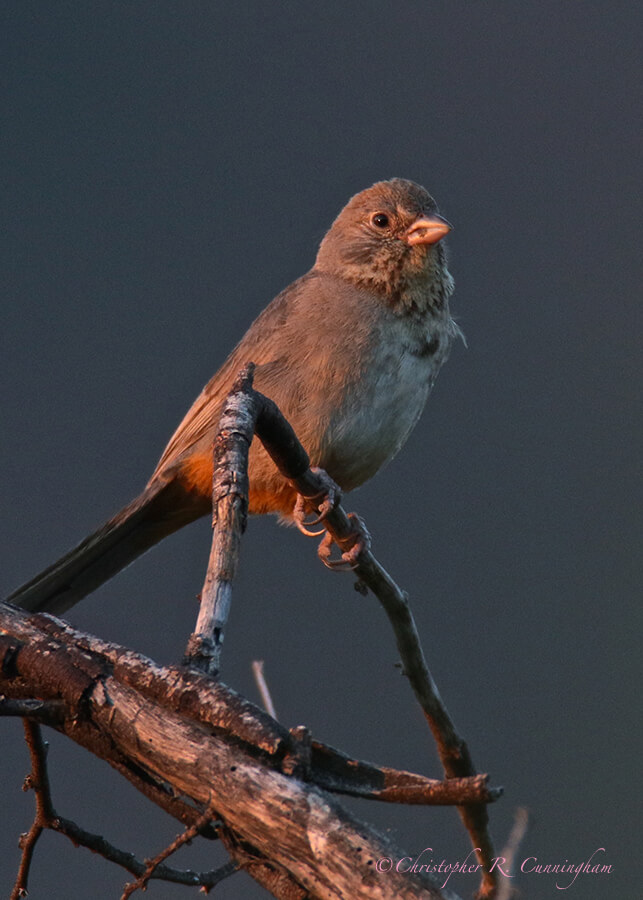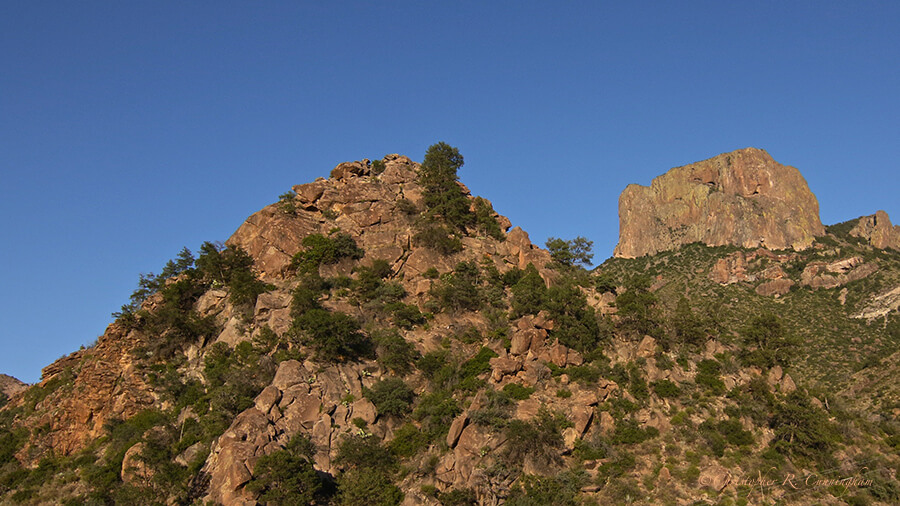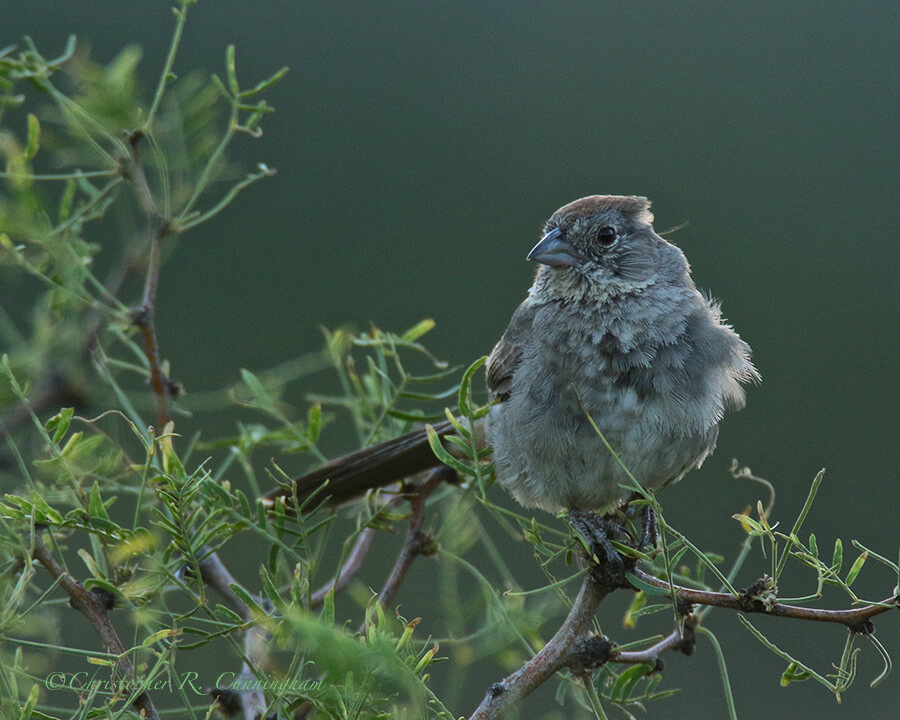Light makes photography. Embrace light. Admire it. Love it. But above all, know light. Know it for all you are worth, and you will know the key to photography.–George Eastman

Canyon Towhees are usually described as drab (“dirt-colored”) nonmigratory desert sparrows of the Southwest. Their charms are, perhaps, a little more difficult to appreciate than those of most birds, but closer inspection reveals a subtle beauty . . . cinnamon undertail coverts, speckling on the breast, a rusty mohawk. And careful observation reveals a few charming behaviors, notably picking dead bugs off parked vehicles and huddling together in the chill of the desert night. In the harsh scrubland environments that these birds inhabit, none of the elements of survival can be wasted–especially not on flamboyance of any kind!.

The blistering desert sun of a Big Bend summer requires the photo-birder to operate primarily at dusk and dawn. In the Basin, where Canyon Towhees are most observable, the optical conditions at dawn are quite different from those at dusk. Dawn light is cool and gray-green, whereas just before sunset the basin is bathed in a warm red light as noted above. It’s hard to tell, though, how much of the reddish light comes from atmospheric physics and how much is light reflected from the oxide staining that covers the Chisos.

Like many desert birds, Canyon Towhees are curious and will allow a close approach (or they may even approach the birder!). But once they decide the actions of the intruder are threatening or inscrutable, they disappear into the arid landscape.
©2015 Christopher R. Cunningham. All rights reserved. No text or images may be duplicated or distributed without permission.